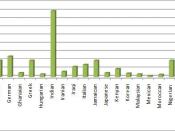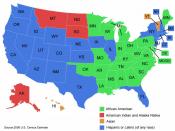A national reform movement in American education was initiated in the 1980's with the release of A Nation at Risk in 1983 (National Commission, 1983) as the United States began to critically address the academic conditions of our elementary and secondary educational institutions. The Commission called on the United States to increase academic standards and improve educational quality without compromising the principles of access.
In 1984 a report entitled, Involvement in Learning shifted the focus from K-12 to post-secondary education, citing that higher education was in no better shape than the "sub-standard" conditions found in the nations elementary and secondary school systems. This report challenged higher education institutions to improve quality by strengthening student learning through a model which included student involvement in learning, communicating high expectations, and assessment with feedback (Sherman, Giles & Greene, 1994).
Since 1985, a political trail has been laid across the country that has made assessment a permanent part of higher education.
A growing number of states, either through direct legislation or through actions of statewide governing or coordinating boards, have officially addressed the critical need for drastic changes in higher education, calling on colleges and universities to improve accountability through assessment (Sherman, Giles & Greene, 1994).
Today, perhaps one of the most significant issues facing assessment in American higher education is the increase in the number of racial and ethnic minorities attending colleges and universities. The cultural values and experiences that these students bring to the educational environment significantly contribute to their individual learning preferences. For postsecondary education, shaping the instructional climate of classrooms in a way that best benefits culturaldifferences in learning styles and educational preferences of ethnic minorities holds special significance. Moreover, addressing problems concerning how educational institutions utilize assessment in determining ethnic minority students' educational achievement still persist.
Overview of ArticleFaculty...


